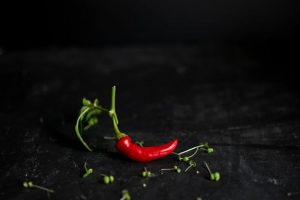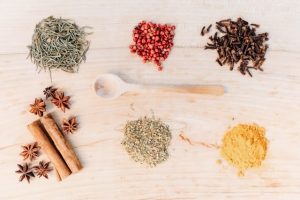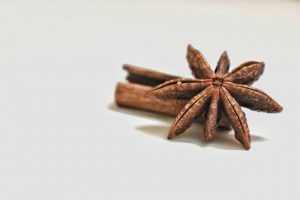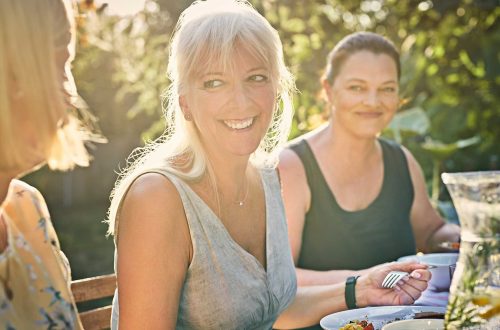Hey there, flavor enthusiasts! Chef Spice Harrington here, ready to dive into a topic that’s close to my heart: spice photography. I mean, we all love cooking with spices, right? But have you ever stopped to really *look* at them? To see the vibrant colors, the intricate textures, the sheer artistry of nature packed into these tiny powerhouses of flavor? Well, get ready to do just that!
Why Photograph Spices?
Okay, okay, I know what you might be thinking: “Spice, why would I photograph something I’m just going to grind up and throw in a pot?” And that’s a fair question! But trust me, capturing spices through photography is about more than just pretty pictures. It’s about:
- Celebrating the beauty of natural ingredients: Spices are a gift from the earth, and they deserve to be appreciated in all their glory.
- Enhancing your culinary storytelling: Whether you’re blogging, creating content for social media, or just sharing your passion for food, stunning spice photography can elevate your message.
- Deepening your appreciation for flavor: When you really *see* the spices you’re using, you develop a deeper connection to the ingredients and the dishes you create.
Lighting: The Key to Spice Photography Success
Alright, let’s get down to the nitty-gritty! Lighting is EVERYTHING in photography, and spice photography is no exception. Here’s what you need to know:
Natural Light is Your Best Friend
Whenever possible, use natural light. Soft, diffused light is ideal for bringing out the colors and textures of spices without harsh shadows. Think about setting up near a window with a sheer curtain or shooting on a cloudy day. I often find that morning light works best, as it’s usually softer and more forgiving. I remember one time I was shooting some saffron and the light was just hitting it *perfectly* – it was like capturing gold!
If You Have to Use Artificial Light, Do It Right
Sometimes, natural light just isn’t an option. If you’re shooting indoors at night or in a dimly lit space, you’ll need to rely on artificial light. Here are a couple of tips:
- Use a softbox or diffuser: This will soften the light and prevent harsh shadows.
- Avoid direct flash: Direct flash can wash out the colors of your spices and create unflattering reflections.
- Experiment with different angles: Try shining the light from different angles to see what works best for your particular spice.
Composition: Arranging Your Spices for Maximum Impact
Composition is all about how you arrange the elements in your photograph. Here are a few compositional techniques that work well for spice photography:
The Rule of Thirds
This is a classic compositional technique that involves dividing your image into nine equal parts with two horizontal and two vertical lines. Place your subject at one of the intersections of these lines for a more visually appealing composition. It’s a simple trick, but it really works!
Close-Ups and Macro Shots
Spices have incredible textures and details that are just begging to be captured up close. Use a macro lens or your camera’s close-up mode to get right in there and showcase the unique characteristics of each spice. Think about the intricate patterns on a star anise, the delicate threads of saffron, or the rough surface of a cinnamon stick. I find this really makes you appreciate the spice on a whole new level.
Negative Space
Don’t be afraid to leave some empty space around your spices. This can help to draw attention to the subject and create a sense of balance in your image. A simple background, like a white countertop or a wooden board, can work wonders.

Styling: Adding Personality to Your Spice Photos
Styling is all about adding props and other elements to your photograph to create a mood or tell a story. Here are some ideas for styling your spice photos:
Use Natural Props
Think about incorporating natural elements like wooden spoons, bowls, mortar and pestles, and herbs. These props can help to create a rustic, organic feel that complements the spices. I love using my grandmother’s old wooden spoon – it adds a touch of history and nostalgia to my photos.
Consider Color Harmony
Think about the colors of your spices and choose props that complement them. For example, if you’re photographing turmeric, you might want to use a blue bowl to create a visually striking contrast. Or, if you’re photographing cinnamon, you might want to use a brown wooden board to create a sense of warmth and earthiness.
Tell a Story
Think about the story you want to tell with your photograph. Are you showcasing the ingredients for a particular dish? Are you highlighting the exotic origins of a spice? Use your props and styling to convey that story. For example, if you’re photographing saffron, you might want to include a map of Iran or a small bowl of rice to suggest its use in Persian cuisine.
Capturing Texture and Color: The Essence of Spice Photography
Finally, let’s talk about capturing the texture and color of spices. This is where your camera skills really come into play!
Focus is Your Friend
Make sure your spices are in sharp focus. This is especially important when you’re shooting close-ups or macro shots. Use your camera’s autofocus or manual focus to ensure that the details are crisp and clear.
Adjust Your White Balance
White balance is all about how your camera interprets the colors in your scene. If your white balance is off, your spices might look too warm or too cool. Experiment with different white balance settings to find the one that accurately captures the colors of your spices.

Edit with Care
Once you’ve taken your photos, you can use photo editing software to enhance the colors and textures of your spices. But be careful not to overdo it! The goal is to enhance the natural beauty of the spices, not to create something that looks artificial.
So there you have it! My top tips for capturing the beauty of spices through photography. I hope you found this helpful and that you’re inspired to start experimenting with your own spice photography. Remember, the key is to have fun and to let your creativity shine! Now, go forth and capture those flavors!







